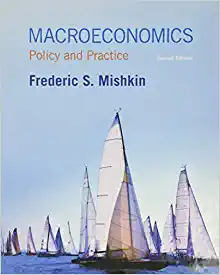Question
Suppose that the current price of oil is $90 per barrel, and global production is about 100 million barrels of oil per day. The elasticity
Suppose that the current price of oil is $90 per barrel, and global production is about 100 million barrels of oil per day. The elasticity of demand for oil has been estimated to be approximately 0.25. The Organisation of the Petroleum Exporting Countries (or OPEC) is comprised of many of the largest non-U.S. oil-producing countries in the world (e.g., Saudi Arabia, Iran, Iraq, Venezuela). For many of these countries revenue from oil is the single largest source of government (or dictator) funding.
(A) [3 points] Suppose that OPEC members, who account for roughly 40% of the world's oil production, decide they want to increase the market price of oil to $100 per barrel. If we assume that non-OPEC producers change nothing, by how much would OPEC have to change its production in order to raise the market price to $100?
(B) [3 points] The U.S. is actually the largest oil-producing country in the world, producing about 15% of the world's oil supply, with a lot of this coming from shale oil. There are a lot of shale oil producers in the United States, and these producers can adjust their quantity supplied frequently. A typical shale oil location in the U.S. has a daily total cost function of TC(Q)= 12,960 + 13q + (1/5)q^2, where q is daily production. (Therefore, the marginal cost is MC (q) = 13 + (2/5)q.)
Based on the cost function given, identify equations for the total fixed cost, total variable cost, and average total cost for a typical shale oil producer.
(C) [2 points] At the current price of $90 per barrel how many barrels per day would a shale oil producer in the U.S. produce to maximize its profits in the short run? (Feel free to assume that any fixed costs are sunk in the short run.)
(D) [2 points] In part (A) we assumed that "non-OPEC producers change nothing". Let's relax that assumption. How would the price-taking shale oil producers in the United States affect OPEC's plan to increase the price of oil through cuts to production? (Answer qualitatively.)
(E) [3 points] If there are no major barriers to entry and exit from shale oil production in the U.S., what is the highest price that OPEC can expect to sustain in the long run?
Step by Step Solution
There are 3 Steps involved in it
Step: 1

Get Instant Access to Expert-Tailored Solutions
See step-by-step solutions with expert insights and AI powered tools for academic success
Step: 2

Step: 3

Ace Your Homework with AI
Get the answers you need in no time with our AI-driven, step-by-step assistance
Get Started


